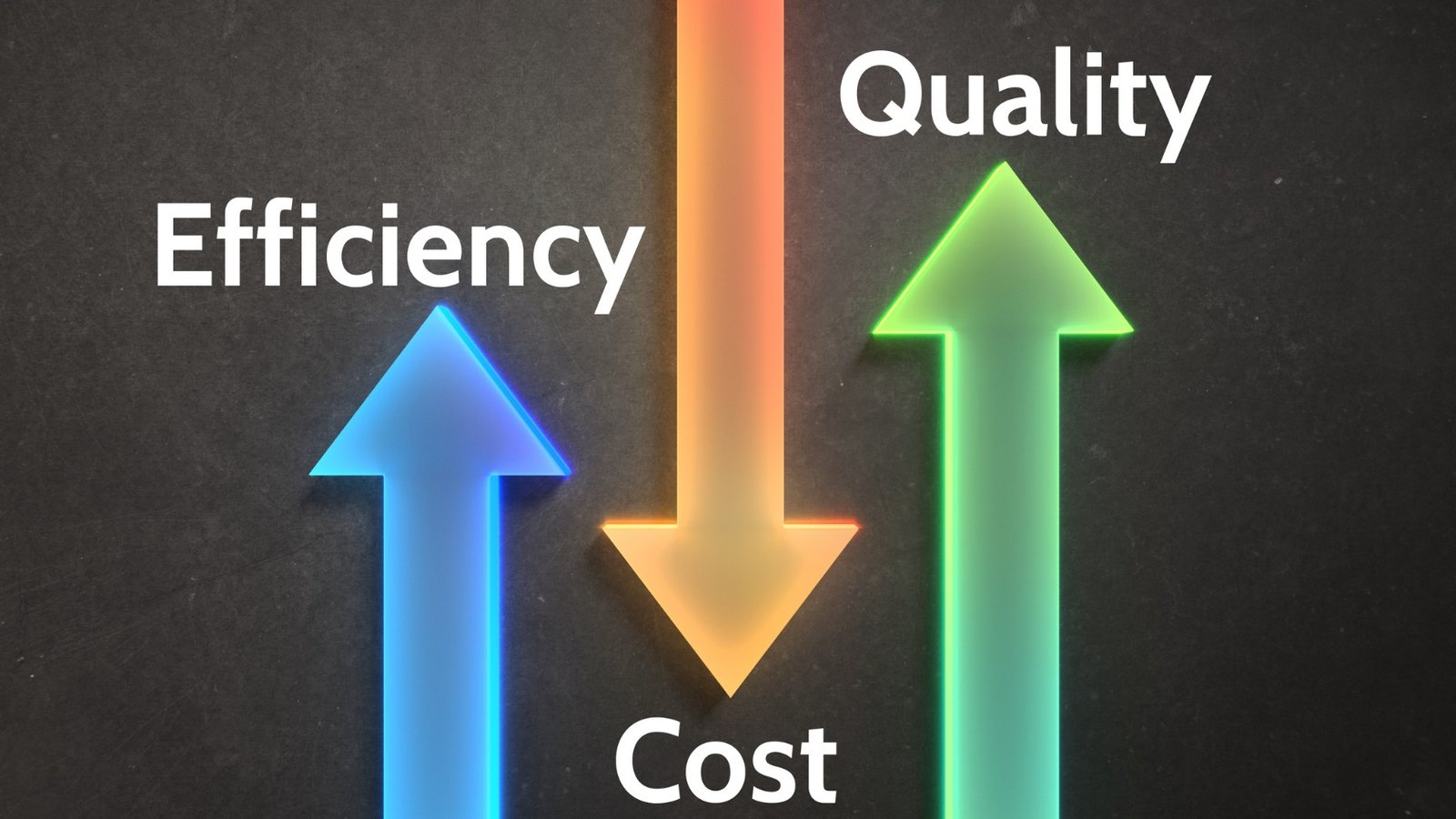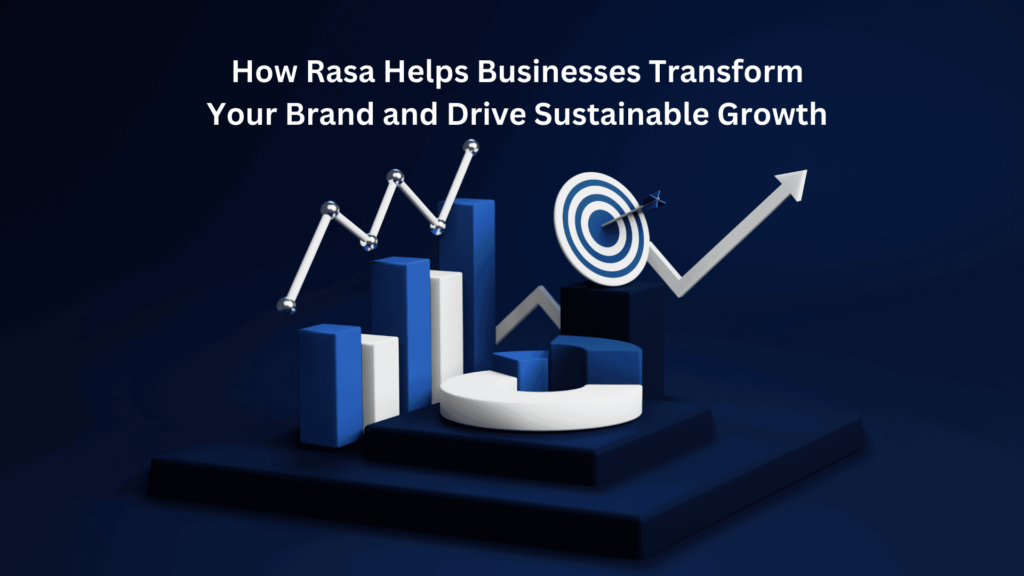Have you ever felt that your business is stuck? Do you wonder why growth seems so hard, even though you work day and night to attract more customers or increase sales? If you’re nodding your head, you’re not alone. Many business owners face this struggle. But there’s a piece of good news: data can give you a fresh way to see what’s happening. By looking closely at numbers you already have—like sales records, website visits, or even customer feedback—you might spot opportunities that have been hidden in plain sight.
This detailed guide will explain how data can become your trusted ally. We’ll explore seven practical steps you can take to make better decisions, streamline your work, and find the right people to help your business thrive. You don’t need advanced math skills or complex tools to start. Simple tracking methods can reveal a lot, especially when you keep an open mind and commit to acting on what the data tells you.
We’ll begin by discussing the importance of understanding the basic metrics that show how your business is performing. We’ll look at Key Performance Indicators (KPIs) such as website traffic, conversion rates, and more. Then, we’ll talk about gathering customer data so you can personalize your approach and connect more effectively with each segment of your audience.
Next, we’ll dive into using data to optimize your marketing campaigns. You’ll learn how to target specific groups, test different ideas, and refine your strategy. We’ll also see how data helps you spot areas where your operations are getting bogged down. This includes identifying bottlenecks, automating repetitive tasks, and keeping your inventory at the right levels to avoid extra costs.
We’ll move on to predicting future trends using old data. Even if you’re new to predictive analytics, you’ll see how anticipating shifts in your market can save you time, money, and stress. Then, we’ll emphasize the importance of creating a data-driven culture in your organization, where employees at all levels understand how to use numbers to make decisions. Finally, we’ll discuss seeking outside help from data consultants and agencies, explaining how to find the right partner if you need specialized support.
By the end, you’ll realize that data isn’t just a bunch of spreadsheets. It’s a tool that, when used wisely, can open new doors for your business. As you read each step, think about where you are right now and what you could do to move forward. Jot down ideas, questions, or areas you want to explore more deeply. The goal is to give you practical tips that you can apply, whether you run a small local shop or manage a large online store.
Below, you’ll find a detailed breakdown of these seven steps. Along with each step, we’ll explore examples, common pitfalls, and ideas to help you apply the information to your situation. Even if you’re completely new to using data for business decisions, don’t worry. Everyone starts somewhere, and the key is to keep learning. Grab a pen and paper—or open a new document—and let’s get started.

1. Know Your Numbers
Why Basic Metrics Matter
Many business owners skip tracking the basic numbers that show how their business is doing. This might be because of time constraints, limited staff, or a belief that it’s too technical. But ignoring data is like driving a car without checking the gas gauge or the speedometer. You may move forward, but you have no clue how far you can go or how fast you’re traveling.
Think about it: if you don’t measure your performance, how do you know if your recent marketing campaign worked? How can you tell if a new pricing strategy is helping you make more money? Without these insights, you’re left guessing. Guesswork can lead to bad decisions, wasted resources, and missed chances to grow.
Picking the Right KPIs
KPIs, or Key Performance Indicators, are specific numbers that help you see if you’re on track to meet your goals. The best KPIs for your business depend on what you do and where you want to go. Some KPIs may include:
- Website Traffic: How many people visit your site each day or month?
- Conversion Rates: Of those visiting, how many buy or take other desired actions?
- Customer Lifetime Value (CLV): How much revenue do you earn, on average, from a single customer over the time they do business with you?
- Cost per Acquisition (CPA): How much money do you spend on marketing to gain one new customer?
These metrics are not set in stone. You may add or remove certain KPIs as your business grows or changes direction. For example, if you shift from selling products to offering services, metrics related to service contracts might replace those that tracked product inventory.
Checking Your Data Often
It’s not enough to know what you want to track; you also need a system to track it regularly. Some people use spreadsheets to note daily or weekly sales, while others rely on analytics tools like Google Analytics for website data. You don’t need a fancy platform at first—start simple. Even something as basic as a notebook can help you see trends over time.
Let’s say you run a bakery and notice that foot traffic doubles every Thursday after you run a small ad on social media. This insight suggests that the ad is successful, and you might consider running it more often or investing more in that channel. On the other hand, if you notice that a certain product isn’t selling, you can adjust your stock or try a different marketing approach.
Using Insights to Improve
Data isn’t magic on its own. It’s useful only if you act on what it shows you. So, after gathering information on website traffic or conversions, ask yourself what changes you can make. If your conversion rate is low, look into whether your website is user-friendly. Maybe the checkout process is too long, or the calls to action aren’t clear.
A practical example: Suppose you own an online clothing store. You track your conversion rates and realize that a large portion of visitors leave right after they see the shipping costs. To fix this, you might consider offering free or reduced shipping, or you could highlight faster delivery times. By trying these changes and watching your data again, you’ll see if you made a difference.

2. Harness Customer Data
The Power of Customer Insights
Beyond basic metrics, customer data is a goldmine for any business. Every time someone clicks on your email, visits your site, or buys a product, they leave a trace. When you connect these traces, you get a clearer picture of who your customers are and what they like. This can help you shape your offers, create targeted ads, and even change how you communicate.
Collecting Data at Key Points
One common mistake is collecting data only at one stage of the customer journey. Maybe you look at sales numbers but ignore how often people open your marketing emails. Or you track website visits without seeing which product pages people spend the most time on. By capturing information at different stages—like sign-ups, purchases, returns, and clicks on social media—you can piece together a fuller customer profile.
For instance, imagine you’re running a local gym. You might see that many people sign up in January (New Year’s resolutions), but only half renew their membership after three months. By looking at check-in records, you may realize that the drop-off happens because people aren’t seeing quick results. This insight could lead you to launch a short beginner program that helps newcomers feel progress early on.
Segmenting Your Audience
Once you have enough data, you can group your customers based on common traits. This is known as segmentation. Maybe you separate them by age, shopping habits, or location. These groups might respond differently to the same email or ad. If you’re an online beauty store, for example, one segment might be interested in organic products, while another cares about anti-aging solutions.
By sending more specific messages to each group, you boost the odds that they’ll pay attention. Segmentation also helps you save money on marketing. Instead of blasting a one-size-fits-all ad, you focus on smaller, more engaged groups.
Personalizing Interactions
When you understand customers’ interests, you can customize what they see on your website or in your emails. Personalization goes beyond just saying “Hi, [Name]” in an email. It can mean showing product recommendations based on browsing history or sending a promotional code for a customer’s birthday.
Let’s say you manage an online bookstore. A returning shopper who likes mysteries might see new releases in that genre on the homepage. Someone who browsed self-help books could get an email with a discount on related titles. By making the customer experience more personal, you can encourage loyalty and repeat business.
Using a CRM System
A CRM (Customer Relationship Management) system stores everything in one place, so you can easily see all your customer data. It helps with tasks like sending follow-up emails, tracking leads, and scheduling outreach. If you’re juggling spreadsheets for inventory, emails, and billing, a CRM can simplify your life. Many systems also offer analytics to show which campaigns are working best.

3. Optimize Your Marketing
Why Data-Driven Marketing?
Marketing without data is like throwing darts in the dark. You might hit the board once in a while, but you won’t know why. By using data, you can find the right audience, craft better messages, and spend your marketing budget more wisely.
Targeting the Right People
Data helps you figure out who your ideal customers are. This might be based on age, job title, purchase habits, or even the types of websites they visit. Platforms like Facebook Ads or Google Ads let you narrow down who sees your ads, preventing you from wasting money on people who are unlikely to buy.
For example, if you run an e-commerce store that sells hiking gear, you could target ads to people who have shown interest in outdoor activities or visited related websites. By focusing on this audience, your money goes toward reaching those who are more likely to want your products.
Testing Different Approaches
A/B testing is a simple yet powerful way to see which marketing approach works better. Suppose you create two versions of an email, each with a different subject line. You send each version to a small percentage of your email list. The version that gets more opens or clicks wins. You then send that winning version to the rest of the list.
This approach doesn’t have to be limited to emails. You can test different ads, landing pages, or even color schemes on your website. Over time, these small tests add up to big improvements.
Measuring and Refining
Once your campaign is up and running, keep an eye on the results. Check metrics like click-through rates, cost per click, and conversion rates. Ask questions such as: Are people opening my emails but not buying? Are they clicking on my ads but leaving the site quickly? Each piece of data tells you where you might need to adjust.
If you see that people click your ad but bounce from the landing page, the page content or design might not match their expectations. Try a different headline or image, then compare the results again. This cycle of testing and refining ensures that your marketing evolves with your audience’s preferences.
4. Streamline Operations
Beyond Marketing
Data isn’t limited to attracting customers. It can also show you where your internal processes could improve. Areas like employee scheduling, inventory management, and customer service all generate numbers that can be tracked and studied.
Spotting Bottlenecks
A bottleneck is a point in your workflow that slows everything else down. Maybe it’s the final approval for a product launch, or perhaps it’s the time it takes to respond to customer service emails. By measuring how long each step takes, you can see where delays occur.
For instance, if you run a delivery service, you might discover that sorting packages each morning takes far longer than expected. Knowing this, you might hire an extra set of hands or rearrange the workspace to reduce sorting time. Freeing up that bottleneck could mean faster deliveries and happier customers.
Automating Repetitive Tasks
Repetitive tasks eat up time that could be used for more strategic work. Common examples include data entry, sending out order confirmations, or sorting through emails. Many software tools can handle these tasks automatically. If you’re hesitant about automation, start small by automating one or two tasks.
Let’s say you own a consulting firm and spend an hour each day manually sending follow-up emails to potential clients. You could use an automated email system to send a scheduled series of messages. That hour saved can then go toward meeting new clients, improving your services, or analyzing data for better insights.
Managing Inventory Wisely
Having too much stock ties up your money in unsold products. Having too little leads to empty shelves and missed sales. Data can help you plan inventory levels by showing you buying patterns. For example, you might see that certain products sell well only during specific seasons. This knowledge lets you adjust your orders so you’re not left with piles of unsold merchandise.
Imagine you sell electronics and notice that gaming consoles spike in sales around the holiday season. By ordering more consoles a month or two in advance, you can meet that demand without risking a shortage. Outside the holiday season, you can shift your focus to accessories or other items that sell steadily year-round.
5. Forecast Future Trends
The Basics of Predictive Analytics
Predictive analytics looks at past data to guess what might happen in the future. It may sound like something only big companies do, but the tools and techniques have become more accessible. Even a small business can look at historical trends to plan for the next quarter or year.
Planning Sales Forecasts
By examining past sales data, you can spot patterns. Maybe you notice that sales dip in the summer, pick up in the fall, and peak near winter holidays. With this knowledge, you can schedule staffing or adjust marketing budgets in advance. You could also plan special promotions during slower months to keep some momentum going.
For instance, a florist might know that February is huge because of Valentine’s Day, and May sees a boost due to Mother’s Day. The florist could stock more flowers, hire extra help, and launch earlier promotions to capture as many orders as possible.
Watching for Market Changes
Data can come from multiple sources, not just your own business records. Look at social media, industry news, and reviews. If you see more people talking about a certain product feature, it might be worth adding to your own offerings. If a new competitor emerges, watch their pricing and promotions to understand how the market is shifting.
Let’s say you run a software company and notice that several competitors are adopting a subscription model. If you see your customers also mentioning recurring billing or flexible payment options, it might be time to consider a similar model. Being proactive can help you stay in front of trends rather than scrambling to catch up.
Managing Risk
Predictive analytics isn’t only about growth; it’s also about avoiding problems. If you track payment histories, for example, you might see a rise in late payments for certain customer segments. This might lead you to tighten your credit terms or send reminders earlier. By catching risks before they escalate, you protect your business’s cash flow and reputation.
6. Embrace a Data-Driven Culture
Why Culture Matters
You can gather data all day long, but if only one person looks at it, your organization won’t benefit fully. A data-driven culture means everyone—from interns to managers—learns to appreciate numbers and use them to make decisions. This doesn’t require everyone to become a data scientist, but it does mean making data visibility and understanding a core part of daily work.
Improving Data Skills
Offer basic training so employees understand how to read simple reports or dashboards. If your sales team sees direct results from certain marketing campaigns, they’re more likely to give feedback or share ideas on how to improve. If your customer service team has a way to log complaints and track resolutions, they might identify patterns that lead to better service.
Many online platforms provide tutorials or quick guides to help beginners learn how to filter data, create charts, or run simple analyses. Encouraging your staff to explore these resources can go a long way.
Sharing Data Across Teams
When data sits in a silo—meaning only one department can see it—it limits its value. By sharing data across teams, you let different perspectives come into play. For example, if the marketing team knows how often inventory runs out, they can coordinate campaigns with the operations team. If the operations team knows which marketing channels lead to the most sales, they can prepare stock accordingly.
Tools like shared dashboards, company-wide emails, or internal chat channels can help everyone stay informed. The key is to make data easy to access and understand, so people actually use it instead of ignoring it.
Leading by Example
Managers and business owners should demonstrate that they rely on data for decisions. Show your team how you used statistics from a recent campaign or production run to guide a new strategy. Invite team members to question or challenge the data if they see room for improvement. This approach sets a tone that encourages curiosity and continuous learning.

7. Partner with Data Experts
Why Outside Help Might Be Needed
No matter how passionate you are about data, there may come a time when you need professional guidance. This is especially true if your company is growing quickly or you’re dealing with large, complex sets of information. Data consultants or specialized agencies can step in to build a more advanced infrastructure, automate certain processes, or perform deeper analysis than you can manage alone.
Types of Data Experts
You can hire a freelance data analyst for short-term projects, like cleaning up a messy spreadsheet or building a custom dashboard. For bigger initiatives, a data consulting firm might be the better choice. These firms often have teams with different skills, such as data engineering, analytics, and project management. They can help you set up comprehensive systems that gather and analyze data on a continuous basis.
Some consultants focus on particular industries, like healthcare or retail. Working with a specialist can be useful if your field has unique regulations or challenges. For example, a consultant familiar with healthcare would know about patient privacy rules, while someone with retail experience might be skilled at analyzing point-of-sale data across multiple store locations.
Picking the Right Partner
Choosing a data consultant is a big decision. Ask about their previous projects, the results they achieved, and their general approach to problem-solving. Talk to their past clients if possible. A reliable consultant should offer clear references and case studies.
It’s also important to make sure their style matches yours. Some consultants prefer highly technical solutions, while others focus on simpler, more user-friendly tools. Think about your own team’s skill level. If you bring in a system that nobody knows how to use, you might end up wasting time and money.
Ongoing Support
A one-time project might help you set up dashboards or train employees, but data is not something you fix and forget. You’ll need updates and possibly new solutions as your business expands or changes direction. Consider hiring a consultant who offers ongoing support, whether through regular check-ins or a help desk you can contact with questions.
Conclusion
Data can seem like a confusing buzzword, but in simpler terms, it’s just information that tells you what’s happening in your business. It helps you see patterns, spot problems, and discover chances you might otherwise miss. Instead of guessing why your sales are down or why customers aren’t returning, you can look at real numbers to guide your decisions.
In this guide, we covered seven key steps to use data for better business growth:
- Know Your Numbers: Track basic metrics (like conversion rates or website traffic) so you have a clear sense of where you stand.
- Harness Customer Data: Collect and organize data from different touchpoints to personalize your offerings and encourage loyalty.
- Optimize Your Marketing: Target specific audiences, test different strategies, and adjust based on what the numbers show you.
- Streamline Operations: Use data to identify bottlenecks, automate tasks, and manage inventory more effectively.
- Forecast Future Trends: Predictive analytics can give you a heads-up on upcoming shifts, helping you plan and avoid risk.
- Embrace a Data-Driven Culture: Make data part of your daily routine, train your team, and share insights across departments.
- Partner with Data Experts: If your needs become more complex, bring in specialists to help you build advanced systems and keep them running smoothly.
The important thing is to take action. Data by itself won’t solve your problems. You have to track it, study it, and then use it to drive real changes. Whether that means tweaking your marketing campaigns, stocking the right products, or investing in new software, the numbers provide a roadmap so you don’t make decisions blindly.
In the end, a data-focused approach can help any business, big or small. Even small steps, like checking website traffic each week or sending more personalized emails, can start a chain reaction of improvement. Over time, you’ll build a stronger, more efficient operation that stands out in the marketplace. By keeping an eye on what’s happening—and why—you can adapt quickly and keep moving toward your goals.
FAQ
1. How do I start collecting data if I’m new to this?
If you’ve never tracked anything before, begin with free tools like Google Analytics for website traffic or a basic spreadsheet for sales. Record data daily or weekly. As you see patterns, decide which metrics matter most to you. You can then add more advanced platforms or hire a consultant.
2. How often should I review my metrics?
At a minimum, review them once a month. A weekly check can be even better if you have fast-changing data, like daily sales or website visits. Frequent reviews help you spot unexpected spikes or drops so you can react quickly, rather than discovering an issue after it’s too late.
3. What is the best way to store my data?
For many small businesses, cloud-based tools like Google Sheets or CRM systems are enough. As you grow, you may want more robust solutions, like dedicated analytics software. Make sure you have backups in case of system failures, and remember to keep your data organized in a way that makes it easy to find what you need.
4. How do I protect customer data?
Data security is important. Use secure platforms that offer encryption, and set strong passwords that you change regularly. Limit who can access sensitive information to trained staff. You should also follow any privacy laws in your region, such as rules for handling payment information or personal data.
5. Can data help me reduce costs?
Absolutely. By looking at process data, you might see tasks that take too long or require too many people. If you automate parts of those tasks, you free up employees for more valuable work. Data can also warn you if you’re overstocking certain products, which can tie up money in inventory.
6. How do I pick the right data consultant?
Look for someone with experience in your industry or a track record of solving problems similar to yours. Ask about their approach, how they measure results, and what kind of support they offer after the initial project. A good consultant should also communicate clearly, avoiding overly technical jargon if it’s not necessary.
7. Will data alone guarantee success?
Data alone can’t guarantee success, but it gives you a better chance at making good decisions. You still have to act on what you learn. If the numbers show that a product isn’t selling, you might need to adjust your marketing plan or improve the product itself. If you do nothing, the data won’t magically fix the issue. Combine the insights you get from data with your own instincts and a willingness to adapt, and you’ll be on the right path to growth.
Final Thoughts
Data is a powerful ally when used properly. It shines a light on what’s really going on, helping you avoid wasted time and money on strategies that aren’t working. By integrating data into every aspect of your business—from marketing and sales to operations and forecasting—you’ll position yourself to grow in a more consistent, sustainable way. If this article sparks ideas or encourages you to start tracking and analyzing data, that’s a great first step. Keep learning, testing, and refining, and you’ll see the benefits of a more informed approach in every part of your business.



